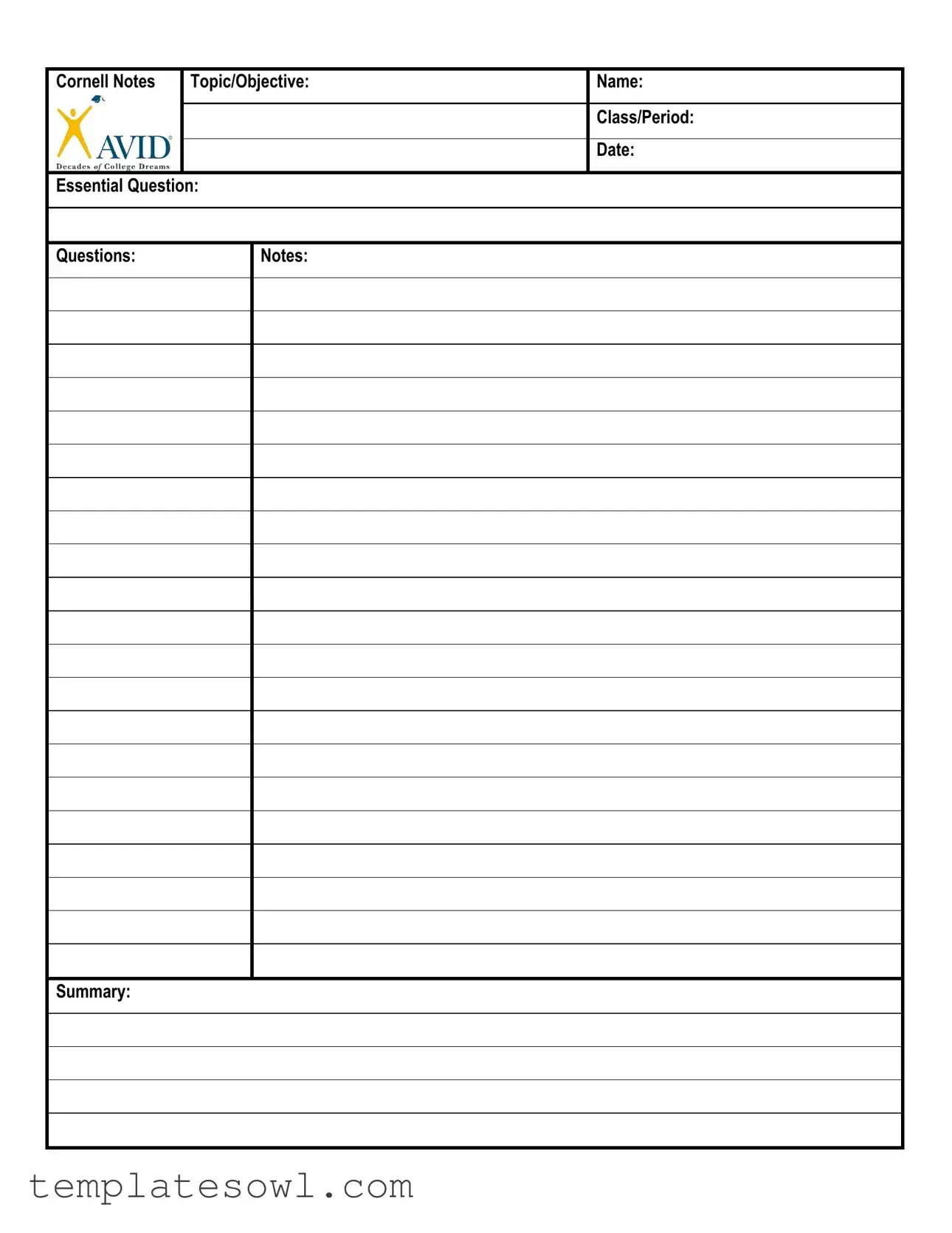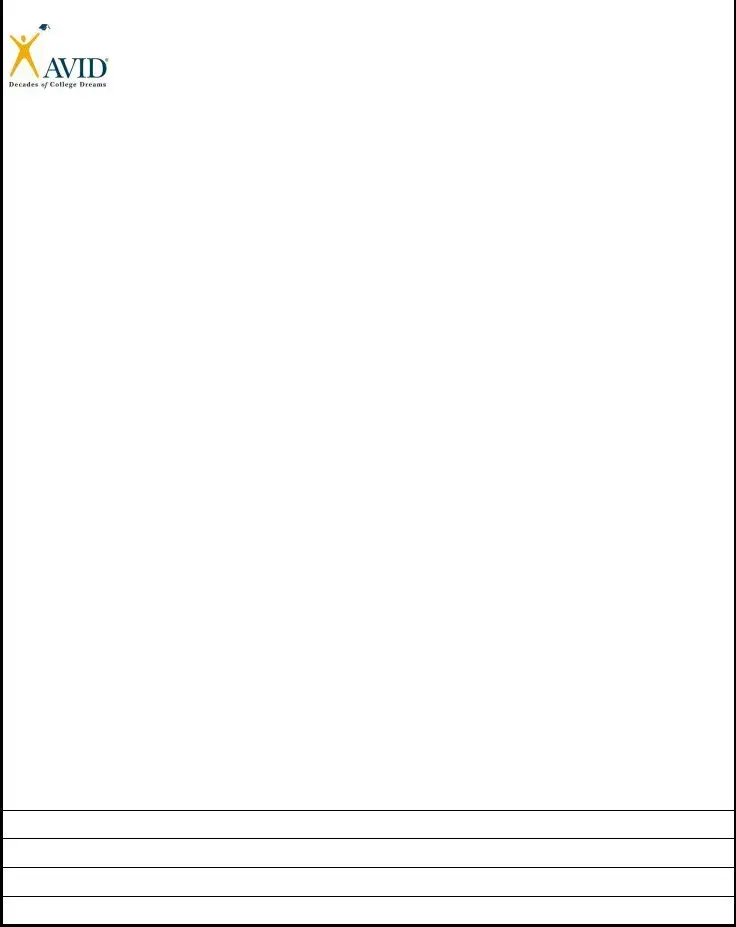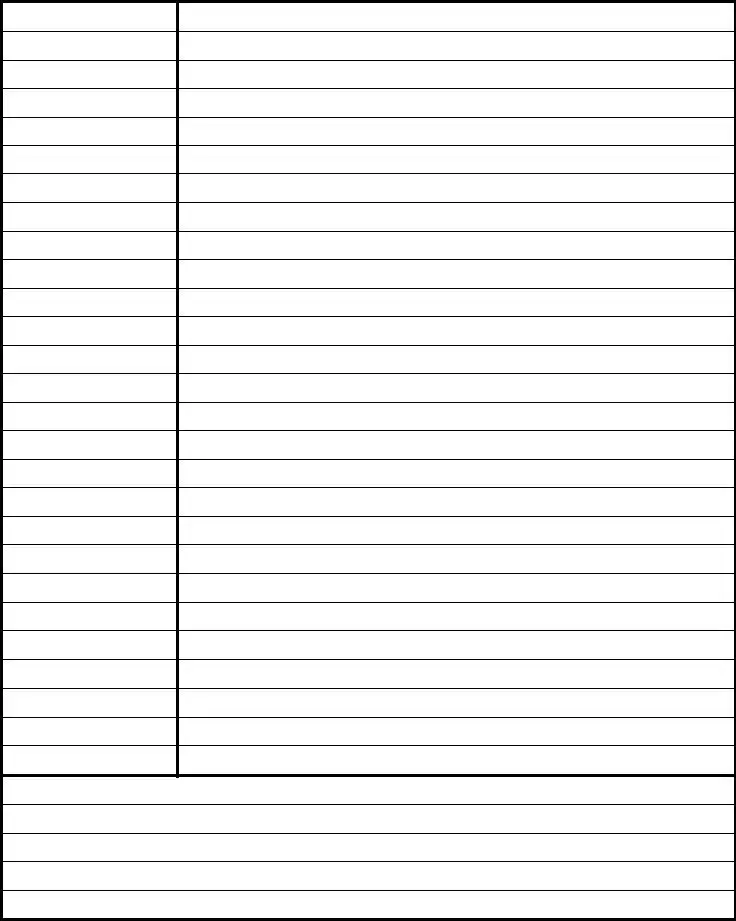What is the purpose of the Essential Question Cornell form?
The Essential Question Cornell form is designed to help students effectively organize their notes and engage with key concepts during their learning process. By focusing on essential questions, students can clarify their understanding of the material, retain important information, and foster critical thinking skills. This structured approach encourages students to identify the main ideas and summarize their learning in an effective manner.
How do I use the Essential Question Cornell form?
To utilize the Essential Question Cornell form, begin by filling in the top section with the relevant topic or objective, your name, class period, and date. Next, write down the essential question that will guide your lesson or study session. As you learn, record questions that arise and make concise notes that address those inquiries. At the end of the session, summarize the key points to reinforce your understanding and retention of the material.
Can the Essential Question Cornell form be adapted for different subjects?
Yes, the Essential Question Cornell form is highly adaptable and can be used across various subjects and topics. Whether you are studying science, history, literature, or math, the structure remains beneficial. Tailor the essential question to align with the subject matter, and adjust the notes and summaries accordingly to make the most out of each learning experience.
What are the benefits of using the Essential Question Cornell form?
Using the Essential Question Cornell form offers several benefits. It promotes active engagement with the material by emphasizing key questions. This form also aids in organizing thoughts, which can improve retention and recall. Summarizing information encourages reflection, solidifying understanding. Furthermore, the structured format can facilitate group discussions and collaborative learning, enhancing the educational experience.
Is there a specific way to summarize the notes in the Essential Question Cornell form?
When summarizing notes in the Essential Question Cornell form, it is recommended to condense the most important information into clear and concise statements. Focus on the main ideas that relate to the essential question. Avoid copying verbatim from your notes. Instead, capture the essence of the content in your own words. This practice enhances comprehension and aids long-term retention of the material learned.


